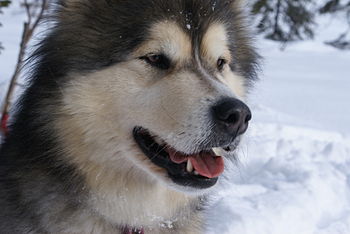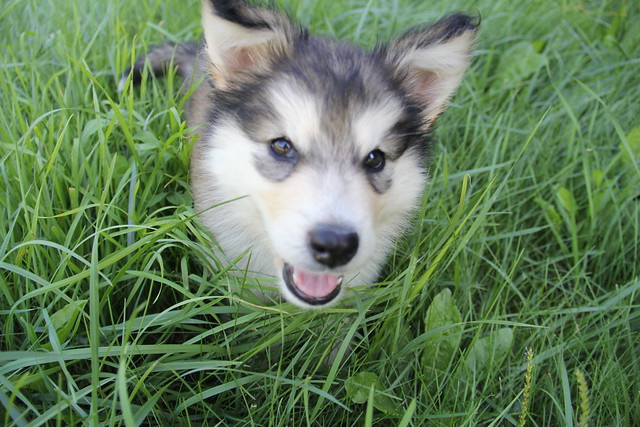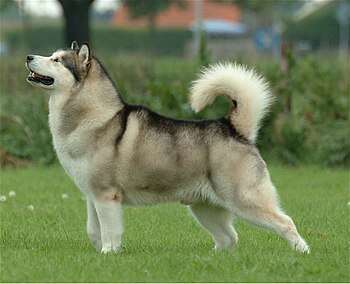 |
| Add caption |
These dogs have a shiny and coarse outer coat, and a soft inner coat, which almost feels like wool, specially designed for living in cold weather. In the event that you are caring for an Alaskan Malamute in warmer climates, you should make sure to provide a place in the shade with plenty of water available at all times.
The coats on an Alaskan malamute come in various shades of grey, black, white, and even red. Specimens, who show mixed colors, will predominantly be white on the extremities. The American Kennel Commission only accepts white as a solid color.
These dogs show a high degree of independence and loyalty. They show a lot of energy as puppies and mellow down a little as years go by. They will chew on anything they can find, dig a hole wherever they please and play dog games all day. If you don’t want it destroyed, better hide it from them. They make a bad choice for an apartment dog or even the pet for a small home. In houses with limited space, the owner will need to take precautions with the fence in order to prevent him from escaping.
This breed loves the outdoors and playing games, they would be especially good for older children until they mellow down a little bit. Malamutes which are trained, and given some sort social behavior classes will handle themselves well among other animals, and even work together with them. However, if left up to their own instincts, they can turn aggressive towards other animals and consider small ones as prey to be devoured and eaten.
This breed loves the outdoors and playing games, they would be especially good for older children until they mellow down a little bit. Malamutes which are trained, and given some sort social behavior classes will handle themselves well among other animals, and even work together with them. However, if left up to their own instincts, they can turn aggressive towards other animals and consider small ones as prey to be devoured and eaten.
This breed of dog is native to Alaska and dates back over two thousand years. Originally, these dogs were trained to work, pulling sleds in the Alaskan Malamute Eskimo tribe. Besides being a great companion to any family, these dogs are still used for pulling sleds in racing events and assisting families who live in arctic regions...
For families living in cold and snowy weather conditions, such as the Eskimo tribes in Alaska, these dogs are of crucial importance for their survival. It is important for aspiring pet owners to consider the design of this dog before opting for him as a pet. The two different coats in the dog’s fur are not made for aesthetic purposes, but rather to provide a lot of warmth in an otherwise inhospitable environment. Getting this dog as a pet, and condemning him to live in the warmer regions near the equator, would only become a permanent form of torture to a dog not equipped to live in such conditions. In other words, it would be like leaving a fish in the sands of the dessert.
|




